Ziegler Schaffhausen
Swiss Mid-Century Handle Vase by Gustav Spörri – Ziegler Schaffhausen – c.1959
Swiss Mid-Century Handle Vase by Gustav Spörri – Ziegler Schaffhausen – c.1959
Couldn't load pickup availability
This refined Ziegler Schaffhausen vase distils Swiss mid-century design into a compact architectural form. The rounded body with a neat integrated handle and small pouring lip is encircled by two bands of hand-drawn geometric motifs in cocoa brown with sunlit ochres.
The decoration and date align with the Ziegler period, shaped by Gustav Spörri (1902 - 1976), the sculptor and ceramic artist who served as artistic director at Ziegler in Schaffhausen from the late 1940s into the 1960s. Spörri modernised the range with rhythmic linework, clean forms and humane, tactile glazes - qualities this c.1959 handle vase captures beautifully.
Beautiful solo, it also pairs effortlessly with Swiss and West German ceramics.
- Material: Glazed ceramic, hand-decorated
- Maker: Ziegler Schaffhausen, Switzerland
- Motif: Hand-drawn geometric banding in polychrome glaze
- Style: Mid-Century Modern
- Place of Origin: Switzerland
- Mark: Unmarked; decoration and form consistent with Ziegler Schaffhausen
- Date of Manufacture: c.1959
- Condition: Excellent vintage condition; minor, age-appropriate wear only
Dimension:
Height: 18 cm | 7.1 in
Width: 12 cm | 4.7 in
Depth: 9 cm | 3.5 in
Weight: 0.4 kg
Share
- Worldwide Shipping
- Secure Packaging
- Loving Curation
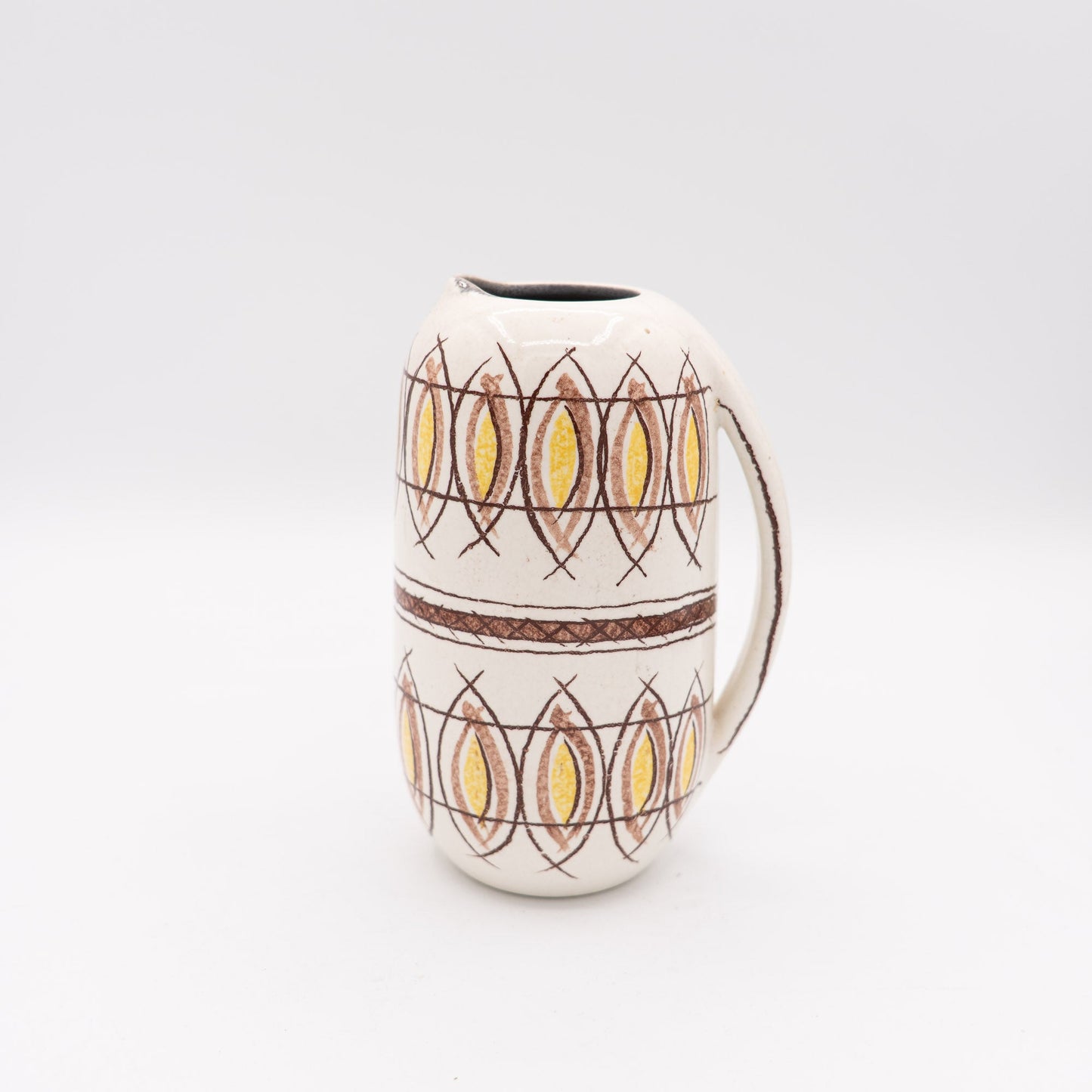
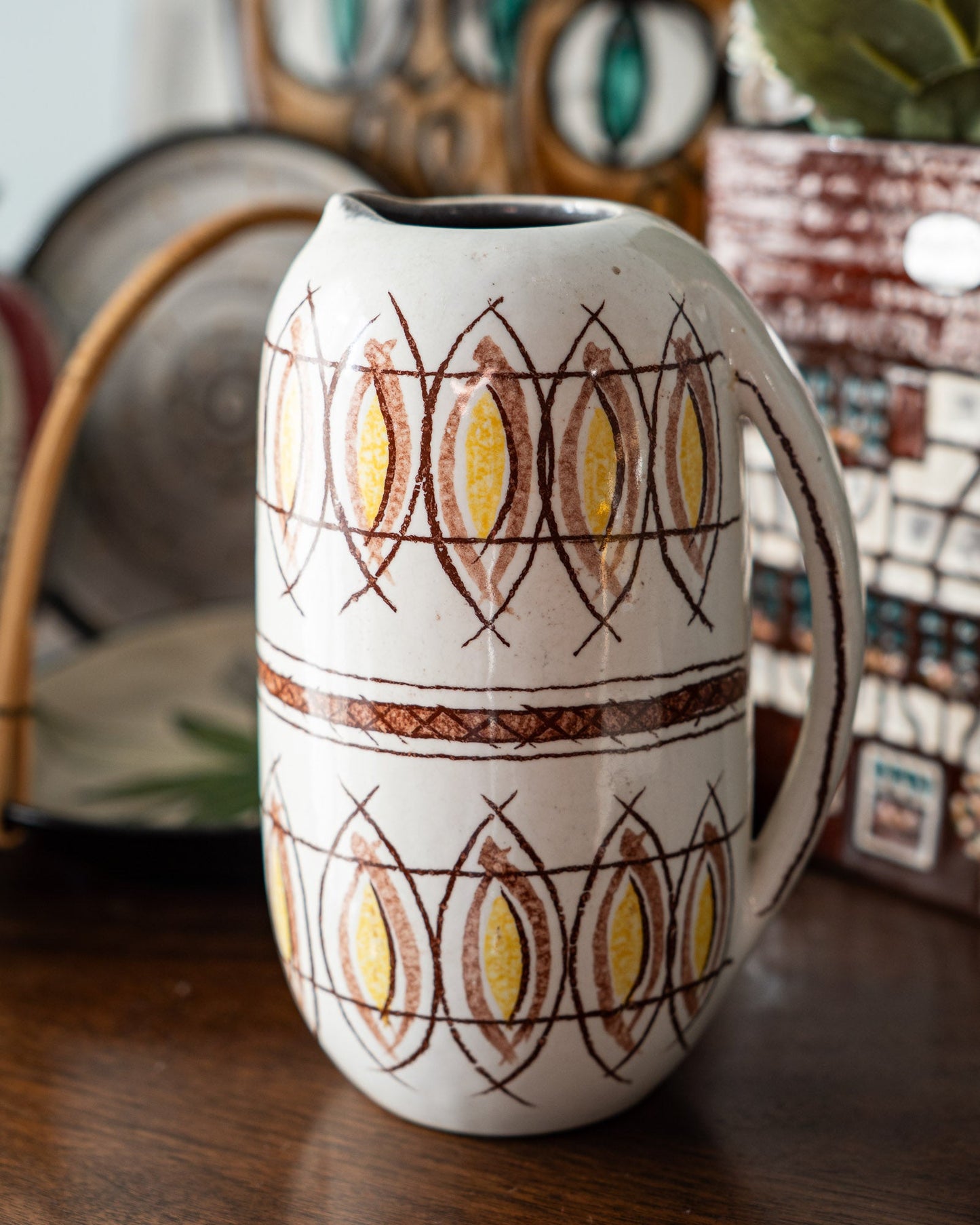
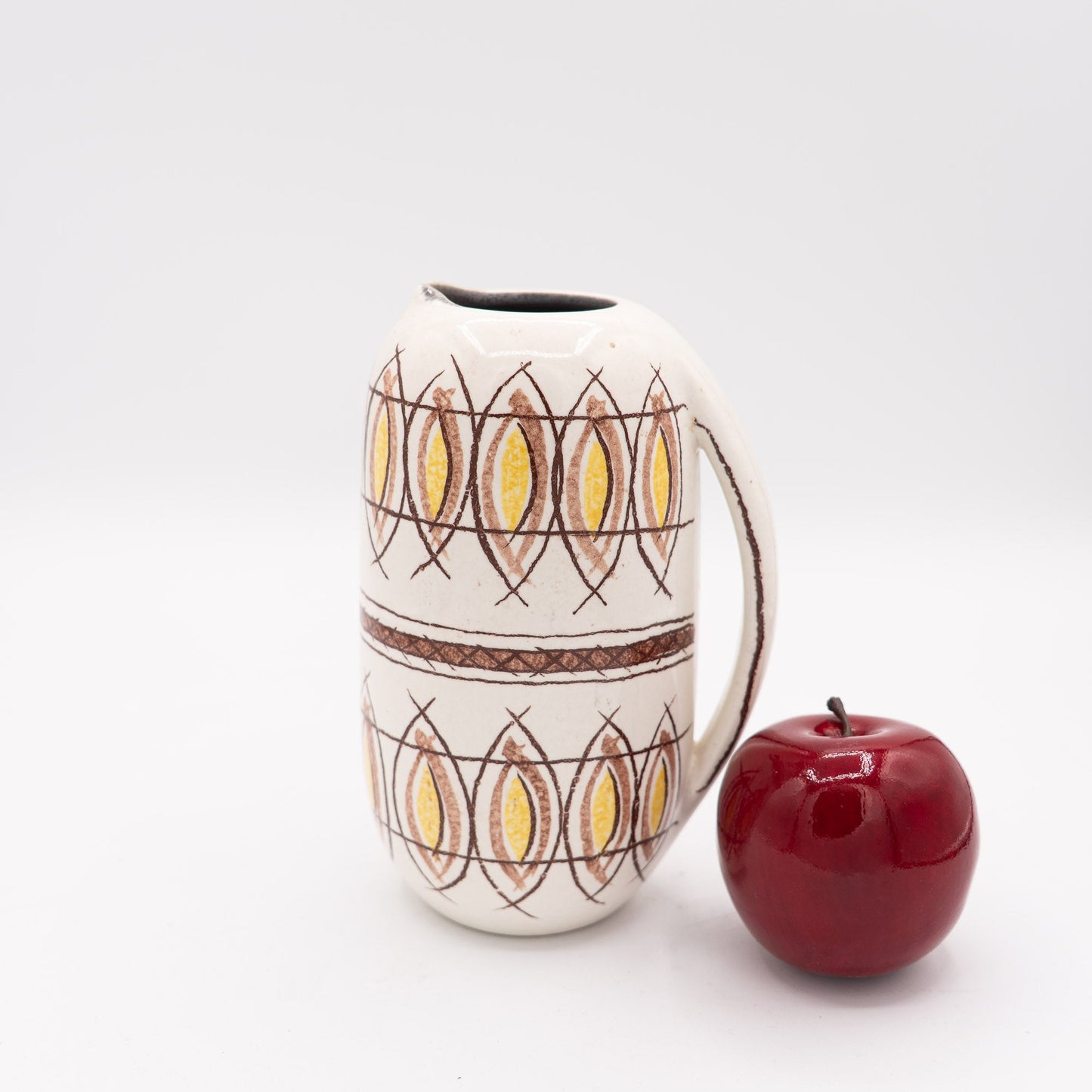
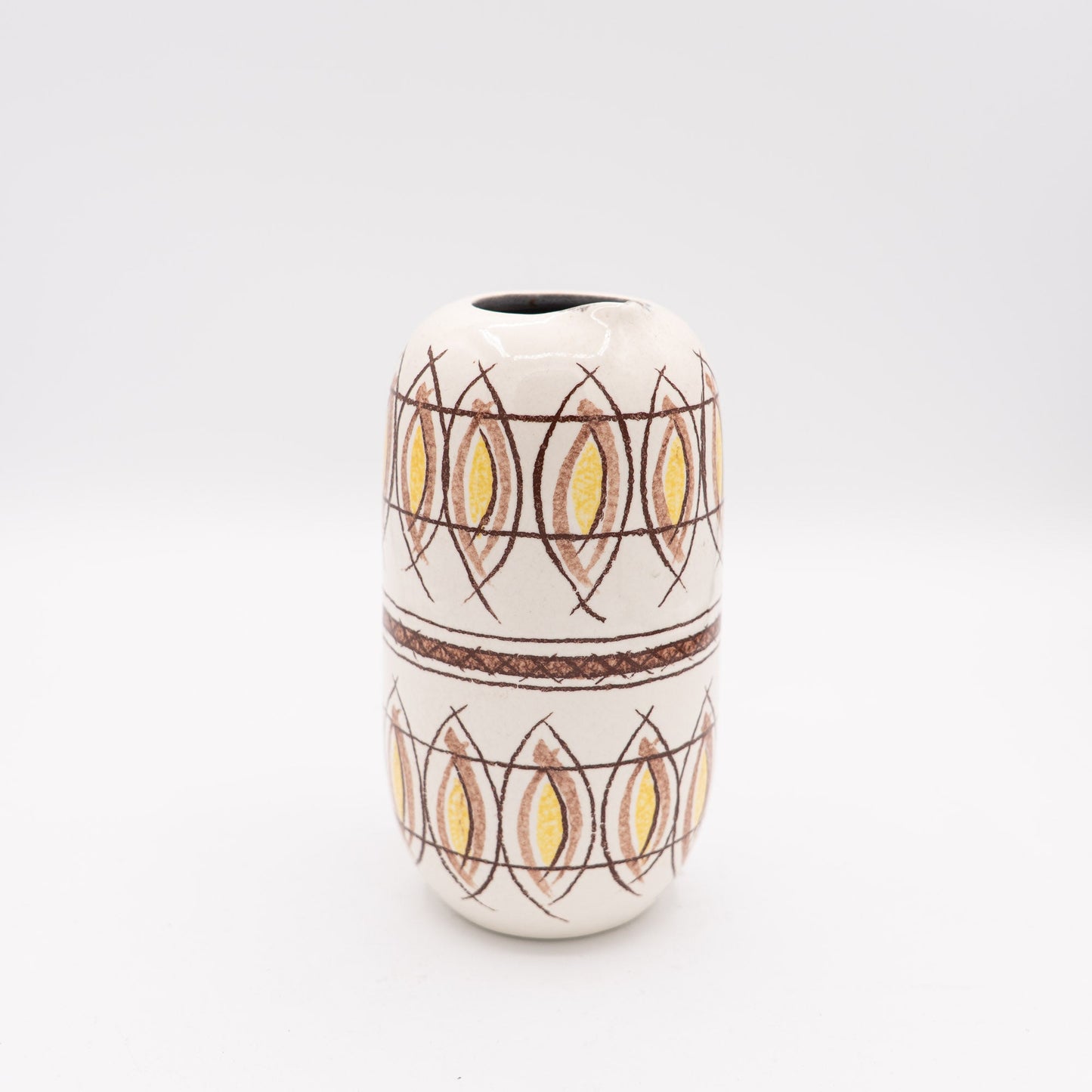
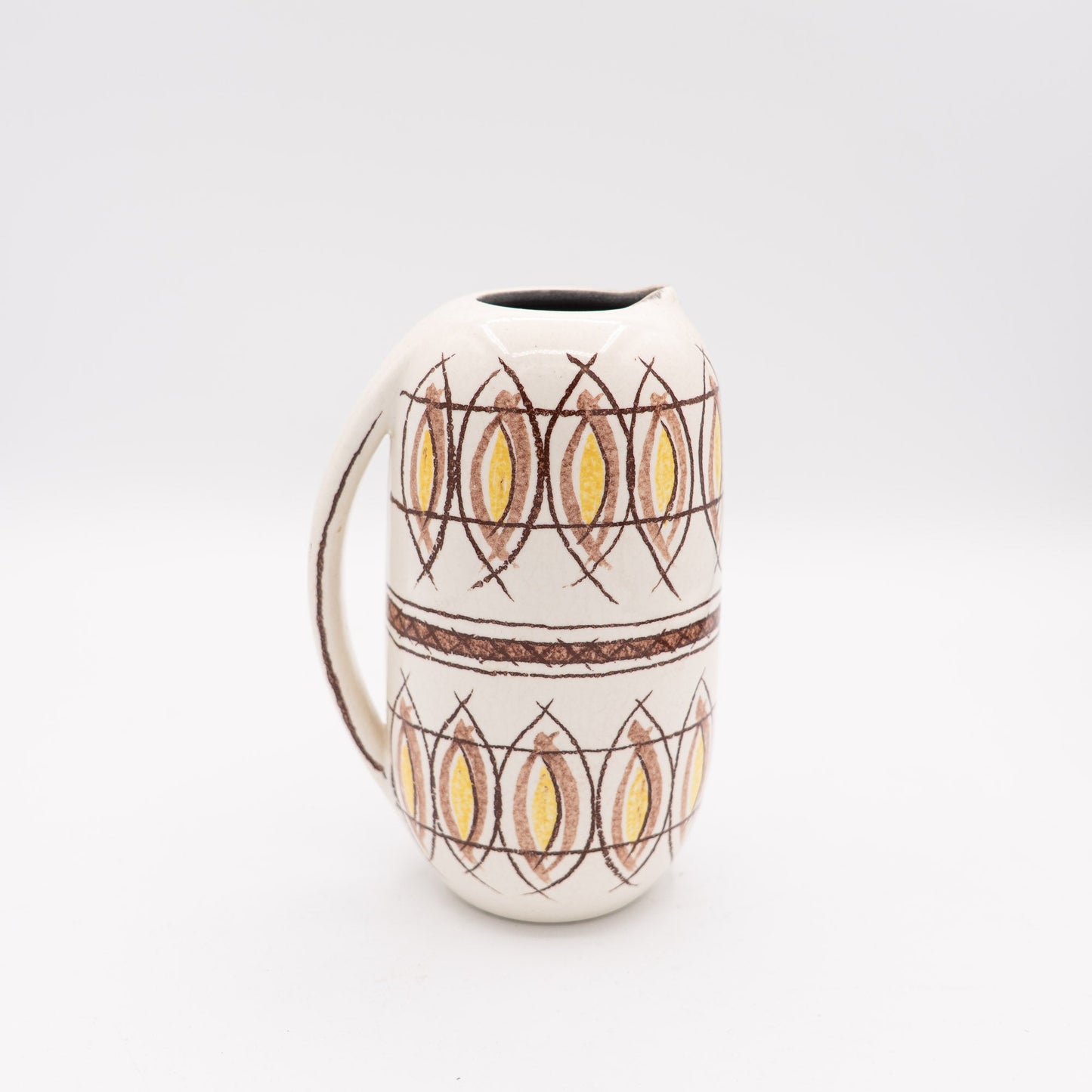
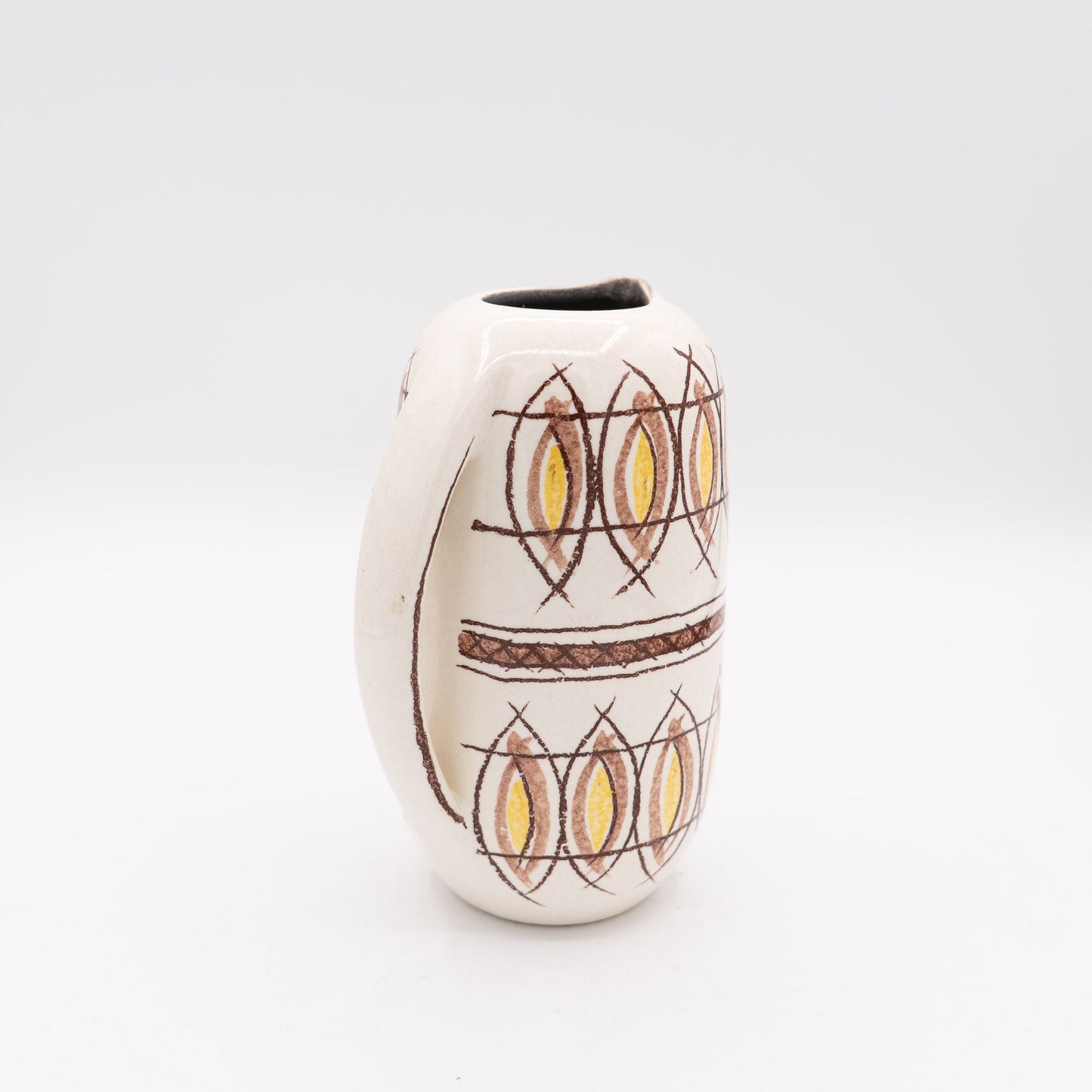
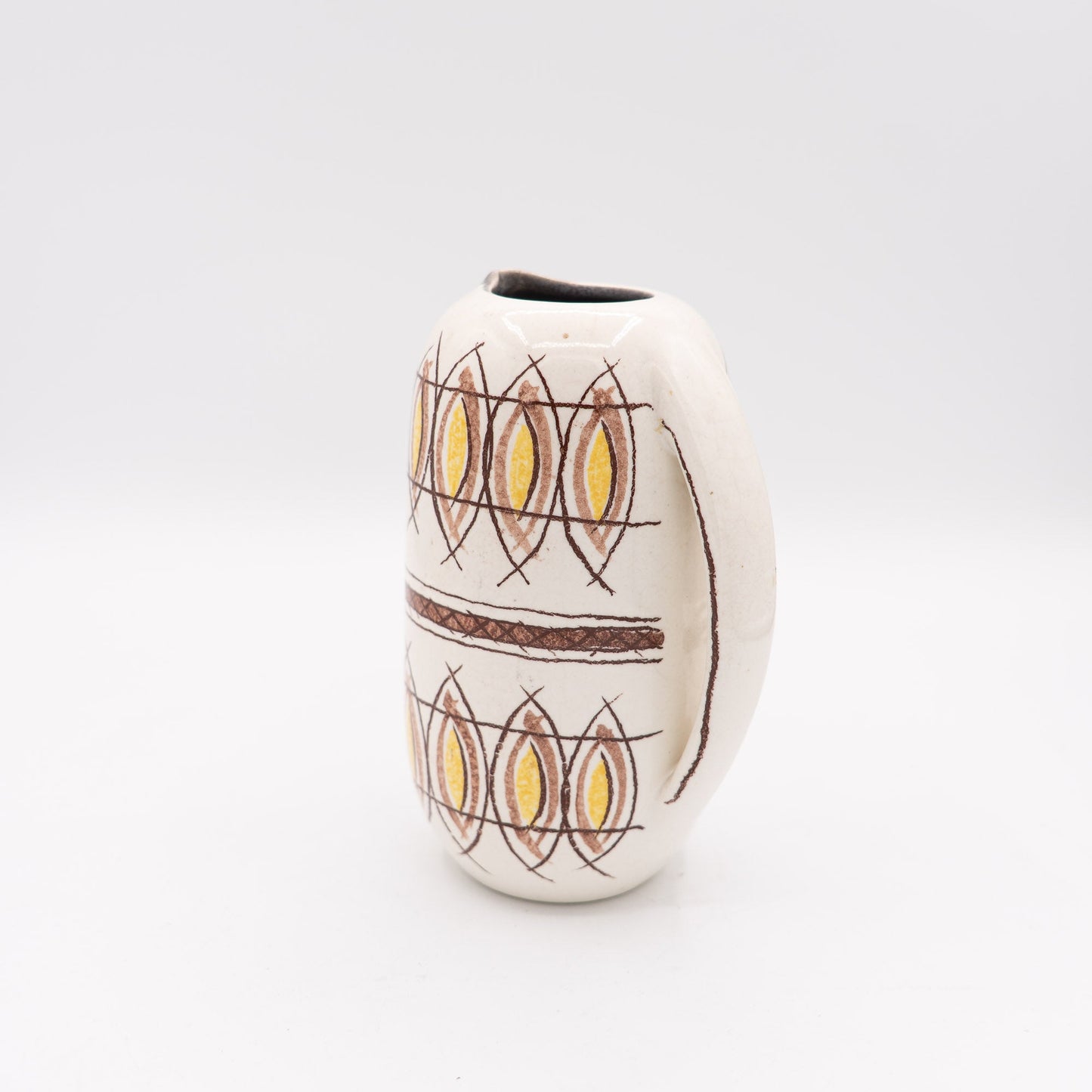
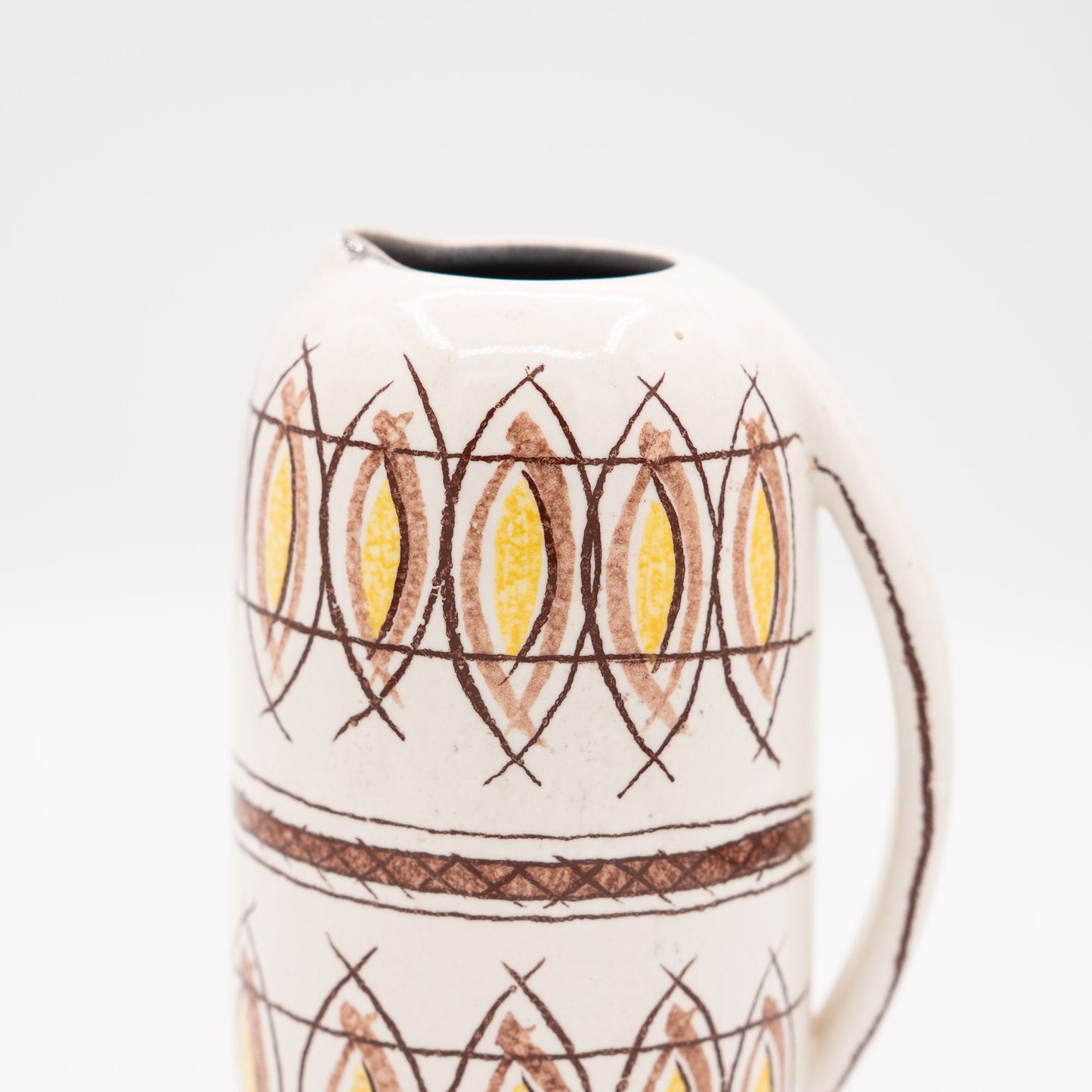
Origin & Maker
Established in 1828, Ziegler Schaffhausen (Tonwarenfabrik Ziegler A.G.) grew from a 19th-century pottery and stove-tile maker into one of Switzerland’s most enduring ceramic names. Across the early 20th century the factory produced stoneware and tablewares alongside architectural ceramics, building a reputation for reliable bodies and crisp decoration.
After the Second World War, Ziegler entered a creative high point. Under the artistic direction of Gustav Spörri (1902–1976) in the late 1940s through the 1960s, the range modernised: simplified forms, rhythmic linework, and humane, tactile glazes captured the spirit of Swiss Mid-Century Modern. Pieces from this era—handle vases, lidded pots, and clean cylindrical forms—show restrained geometry and warm, nature-tinted palettes.
Though factory production wound down in the early 1970s, Ziegler’s legacy remains vivid. Collectors prize the combination of disciplined Swiss manufacture and quietly expressive surface design—ceramics that feel both practical and poetic, perfectly at home in contemporary interiors.
Blog posts
View all-

A Serendipitous Morning at the Rue de Bretagne ...
There are few joys in life that match the thrill of stumbling upon a hidden treasure, and for me, flea markets hold that magical allure. One of my favourite flea...
A Serendipitous Morning at the Rue de Bretagne ...
There are few joys in life that match the thrill of stumbling upon a hidden treasure, and for me, flea markets hold that magical allure. One of my favourite flea...
-

Emile Bourgeois and "Le Grand Dépôt" in Paris
Recently, I found this stunning Sarreguemines wash set. It was at the Brocante in Belfort, France. On this day, we had got up at 4 AM to be there in...
Emile Bourgeois and "Le Grand Dépôt" in Paris
Recently, I found this stunning Sarreguemines wash set. It was at the Brocante in Belfort, France. On this day, we had got up at 4 AM to be there in...
-

The Legacy of Robert Haviland: A Journey from N...
The story of Robert Haviland porcelain is one of artistry, transatlantic ambition, and enduring heritage. It begins in the mid-19th century when David Haviland, an enterprising New Yorker, founded Haviland...
The Legacy of Robert Haviland: A Journey from N...
The story of Robert Haviland porcelain is one of artistry, transatlantic ambition, and enduring heritage. It begins in the mid-19th century when David Haviland, an enterprising New Yorker, founded Haviland...











